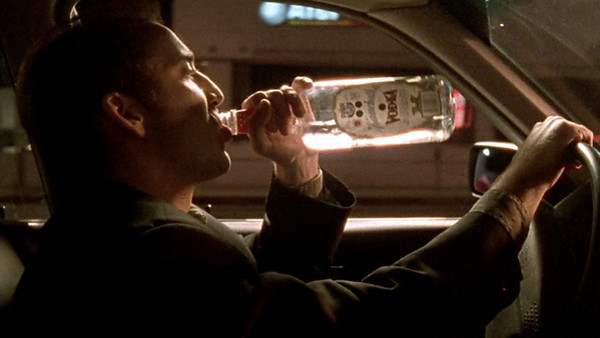From the post-war anxieties of the 1950s to the personal desolations of the 1990s, delve into how cinema’s portrayal of alcohol captures the essence of their respective eras. Join us as we trace the societal shifts through “Some Came Running”, “Days of Wine and Roses”, and “Leaving Las Vegas.”
Cinema, throughout its history, has chronicled societal changes, reflections, and emotions, shaping and being shaped by the time it comes from. Among various themes explored in cinema, the depiction of alcohol and its effects has been notably prominent. Three films in particular stand out when tracing the evolution of this theme – “Some Came Running” (1958), “[Third Film],” and “Leaving Las Vegas” (1995). These films, separated by decades, not only shed light on the relationship between characters and alcohol but also on the societies from which they emerged.
Some Came Running from the late 1950s was directed by Vincente Minnelli and starred heavyweights like Frank Sinatra and Dean Martin. This post-war era in America was marked by rapid growth, yet underneath this prosperity lurked existential questions, societal norms, and prejudices. The film’s protagonist, Dave Hirsh, grapples with alcoholism as he seeks acceptance and meaning in his hometown. Here, alcohol isn’t just an addiction but a reflection of the broader societal angst and the search for identity in a rapidly changing world.

Bridging the gap between the 1950s and the 1990s, is Days of Wine and Roses (1962), directed by Blake Edwards. This film delves into the lives of a couple spiraling into the depths of alcoholism. The 1960s was a decade of turbulence, and amidst the Civil Rights Movement, Vietnam War, and generational shifts, there was a growing awareness of substance abuse. The movie was groundbreaking as it provided an unfiltered look into addiction and the devastation it wrought, mirroring the societal disruptions and transformations of the 1960s.

Fast-forwarding to 1995, Leaving Las Vegas is a tragic tale of a failed screenwriter, Ben, played by Nicolas Cage, who goes to Las Vegas with the intention of drinking himself to death. This film emerges from a period where the destructive force of addiction was well-recognized. Unlike the earlier films where alcohol served as metaphors for larger societal issues, here it is raw, personal, and tragic. The 1990s saw the disintegration of the ‘American Dream’ for many, and the film paints a bleak picture of personal despair and desolation.

In connecting these films, it becomes evident that the representation of alcohol in cinema is not just about personal choices and tragedies. It is deeply entwined with the times. From the post-war anxieties of the 1950s to the societal upheavals of the 1960s and the personal desolations of the 1990s, these films, in their portrayal of alcohol, become chronicles of their respective ages, reflecting the moods, concerns, and introspections of the periods they belong to.
